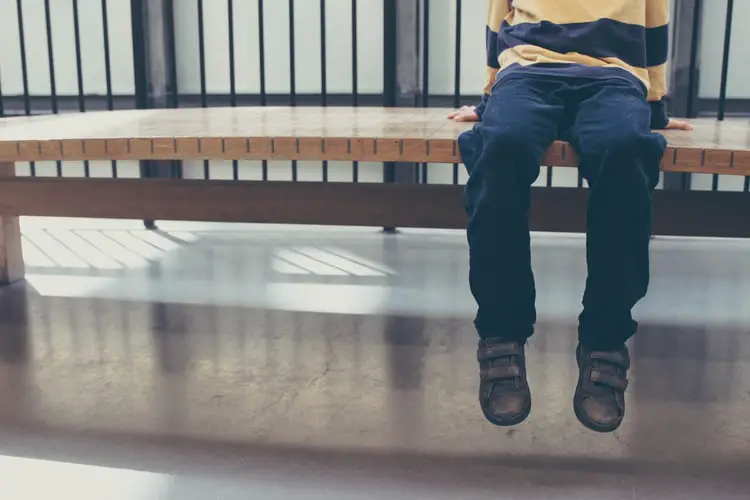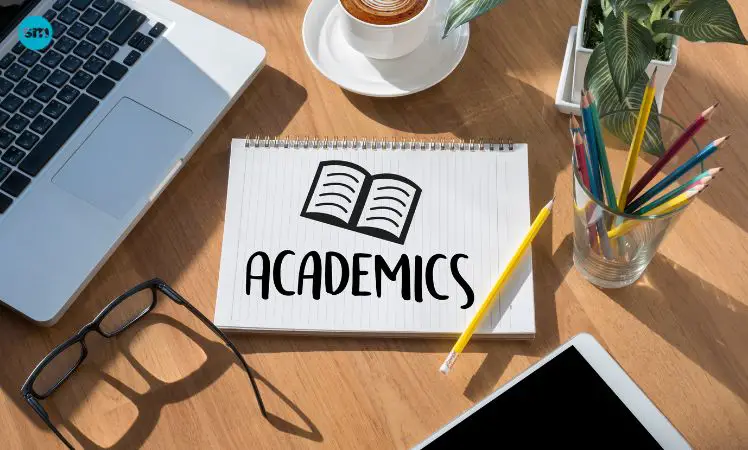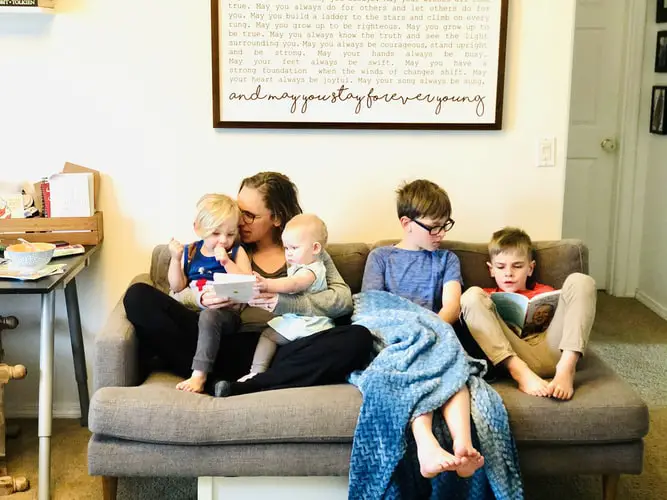List of 70 Social Welfare Programs In The US

Last Updated on January 25, 2024 by Lori Pace
We’ve compiled a comprehensive list of 70 social welfare programs. Hence, you may benefit from it as an individual living in the United States.
You’re a single mother struggling to make ends meet. Or perhaps, you live with an elderly relative who needs additional care and support. Or maybe you’ve been laid off recently, and you’re not sure how you’re going to pay the bills.
However, if you’re between a rock and a hard place, you should know that many grants for single mothers are available to help you.
So, below is our list of the 70 Best Social Welfare Programs:
Food and Nutrition Programs
Supplemental Nutrition
SNAP helps low- to no-income Americans buy food using an Electronic Benefits Transfer (EBT) card. So, beneficiaries can use these cards with monthly benefits to buy groceries within their vicinity.
This program supports low-income pregnant, breastfeeding, and non-breastfeeding post-partum women. Moreover, infants and children up to five who are at “nutritional risk” are also eligible. Recipients of the program receive various benefits. These include an EBT card or vouchers to buy WIC-approved food items. Besides, information on nutrition and breastfeeding, health screenings, and more are provided.
Besides providing low-income families with the means to meet their basic nutritional needs, SNAP also offers several Employment and Training programs. These programs are designed to help SNAP participants achieve self-sufficiency. For instance, it equips them with the necessary skills to enter the workforce or get a promotion to their current position.
School Program
The School Breakfast Program ensures that children from needy families have access to the most important meal of the day. It provides free or reduced-price breakfast meals to eligible children at all participating schools and childcare institutions.
Like the School Breakfast Program, the National School Lunch Program aims to provide healthy lunches. Besides, the target participants are students from low-income households for free or discounted prices.
Food Program for School
This program ensures that children and teens who benefit from the federal nutrition programs at their schools still have free healthy meals and snacks when school is not in session.
Food Program for Children & Elderly
The Child and Adult Care Food Program caters to the nutritional needs of children and adults over sixty years of age at participating daycare facilities. It does this by providing reimbursements for healthy meals and snacks that promote the overall well-being of the recipients.
These food assistance programs help individuals who are sixty years and older. Besides, most of them are administered by the U.S. Department of Agriculture’s (USDA) Food and Nutrition Service. They include, for example, the Child and Adult Care Program, the Commodity Supplemental Food Program, and the Senior Farmers’ Market Nutrition Program.
Emergency Program
This program aids families, individuals, and households experiencing food insecurity and/or homelessness due to severe economic hardship. Various non-profit and governmental organizations administer the program. In addition, these aim to provide shelter, food, and other supportive services to those in need.
TEFAP distributes free food to low-income families in dire need of assistance. It does this in one of two ways: by delivering the food directly to the household in need or distributing it among various emergency food providers, such as food banks, soup kitchens, food pantries, and shelters.
Housing Programs
Section Programs
In short, Section 8 of the U.S. Housing Act (1937) provides safe, sanitary housing at affordable rates to low-income families and individuals. So, assistance is often in a voucher or subsidy, which beneficiaries can use to acquire a modest home of their choice.
So, Section 811 funds housing projects that provide affordable homes to low-income disabled individuals and families of disabled individuals who meet the income requirements.
This program gives low-income, elderly individuals aged 62 or older—the opportunity to live independently in low-cost housing units with access to various support services. Although no new housing developments have commenced under this program since 2012, the units built-in previous years continue to house low-income senior residents.
These loans help low-income families in rural areas obtain adequate housing by providing them with payment assistance. In short, payment assistance is a short-term financial aid that subsidizes a portion of the beneficiary’s monthly mortgage payments.
Assistance Program
This program aids low-income families who reside in Rural Rental Housing (RRH) or Farm Labor Housing (FLH) by reducing the amount of rent they have to pay.
Homelessness Assistance Programs distribute funds among states, local governments, and non-profit organizations that serve to alleviate the plight of homeless families and individuals across the U.S. In short, some of these programs include the Continuum of Care (COC) Program, the Emergency Solutions Grants Program, and Housing Opportunities for Persons with AIDS (HOPWA).
WAP offers weatherization services to low-income households. Moreover, the purpose of weatherization is to make homes more energy-efficient. This, in turn, helps low-income families lower the cost of their utility bills by reducing their energy consumption.
LIHEAP provides federal financial assistance to low-income households by covering a portion of their home energy costs. It will also help to pay for some of the expenses incurred for minor energy-related home repairs. In addition, LIHEAP offers emergency assistance to households experiencing an energy crisis resulting from unsafe heating and cooling practices.
This is currently the only federal program that provides housing assistance to low-income individuals living with HIV/AIDS.
Funding & Partnership
This grant program gives federal assistance to Federally recognized Indian tribes and tribally designated housing entities (TDHE). So, it provides various services, including housing counseling, self-sufficiency services, energy auditing, and the establishment of resident organizations.
The NSP provides funding to local and state governments for the resale and/or redevelopment of properties that have been repossessed. This prevents these properties from becoming sites of abandonment and blight within their communities, which could, subsequently, lower the values of surrounding homes.
HOME distributes grants to states and localities that often partner with non-profit organizations to fund various housing projects. In short, these projects build, buy, or renovate low-cost housing units for financially disadvantaged families and individuals. This program also provides direct rental assistance to those who meet the income requirements.
Healthcare Programs
Health Insurance Programs
CHIP offers affordable health insurance to children from households whose income exceeds the income limits for Medicaid. Moreover, CHIP programs are available in each state. Each also has its own set of eligibility requirements.
Medicaid is the largest provider of public health insurance in the U.S. In short, it provides free health insurance and healthcare benefits to low-income adults, children, pregnant women, the elderly, and disabled persons who meet the eligibility requirements.
This program aims at low-income women who cannot afford health insurance. It also provides them with several healthcare services at reduced rates, or in some cases, for free. These services include breast and pelvic exams, STD education, screening and treatment, HIV testing and counseling, access to contraception, and more.
Health Service Programs
This program offers comprehensive healthcare and support services to low-income Americans living with HIV/AIDS. Moreover, the program allocates funds to states, cities, counties, and local organizations that help cover the care and treatment costs of individuals with HIV.
The U.S. Department of Health and Human Services administers IHS. So, it is the primary Federal healthcare provider of federally-recognized Native American tribes and Alaskan Natives.
Health Centers are federally-funded establishments that provide healthcare services to all the residents within a given community, particularly those who do not have access to medical services. This typically includes migrant and seasonal farmworkers, homeless individuals, public housing residents, and among all, children of school-going age.
Financial/Employment Assistance Programs
This program is dedicated to helping blind, disabled, and elderly persons by providing them with monthly cash grants and other forms of assistance. It also offers these benefits to the parents of disabled children who meet the income requirements.
This program provides employment and training opportunities to low-income individuals aged 55 and older. However, participants participate in various community service activities at various non-profit and public facilities, allowing them to gain work experience.
Tax Credit
Earned Income Tax Credit is available to families and individuals who earn low-to-moderate incomes. This is a tax benefit that either reduces the amount of taxes recipients owe or provides them with a refund. The program is targeted at households with children, so couples with children typically earn higher refunds than couples without children.
Parents with child dependents under the age of 17 may be eligible for Child Tax Credit. This is a tax benefit that is awarded to taxpaying parents to help them support their families.
Job Corps is a nationwide job training program that helps young people between the ages of 16 and 24 enter the workforce. In addition to allowing students to complete their education and obtain vocational skills, the program also offers transitional support services, such as accommodation, child care, and transportation.
Workforce Innovation & Opportunity Act
WIOA has several programs dedicated to providing workers with various career-related services. For example, the Adult Program is one of these programs. Briefly, it helps individuals 18 years and older find employment and develop their vocational skills.
This program is aimed at low-income youth between the ages of 14 and 24. So, it helps them on the path toward successful careers by providing them with the necessary training and support.
Persons over 18 years of age and workers laid off due to circumstances beyond their control are eligible for this program. It helps these individuals by offering them training. Moreover, it puts them in touch with employers looking for skilled workers who can contribute to the growth of their businesses.
Temporary Assistance
So, in short, TANF helps families and individuals with care dependents who live on or below the breadline by providing them with temporary financial assistance.
To be eligible to receive cash benefits from TANF, applicants must participate in various work-related activities. However, fortunately, TANF offers several employment and training programs that help recipients on the path to achieving self-sufficiency.
TAG is aimed at helping refugees achieve self-sufficiency within their first year of participation in the program. This is done by assisting them in finding employment or retaining their current position, for instance.
Education Programs
Academic Support Programs
Students who qualify for Federal Pell Grants may also be eligible for the Academic Competitiveness and Smart Grant Programs. These grants are awarded based on the student’s academic performance in certain degree programs, as well as their financial need.
MSP aims to improve the academic performance of students in the subject areas of mathematics and science. It also promotes better training for teachers who specialize in these subjects.
This program is administered by participating schools across the country. It is also available to undergraduate students who demonstrate exceptional financial need.
GEAR-UP is a program that prepares low-income students for enrollment and success in postsecondary education. It also provides scholarships to deserving students who meet the income requirements.
REAP runs two initiatives that are aimed at helping schools in rural areas get access to more funds from Federal grant programs. In short, the two initiatives are the Small Rural School Achievement Program and the Rural and Low-Income School Program.
This program distributes funds to agencies that offer training and certification programs to teachers and principals. This is to increase the number of highly qualified teachers and principals in American schools, which, in turn, helps to improve the overall academic performance of students.
The Indian Education Program caters to the educational and cultural needs of American Indian and Alaskan Native students.
This program sees that all migrant students obtain a level and standard of education that adequately prepares them for higher learning and employment.
Adults Education Programs
These grants are used to fund local literacy programs for adults and teens 16 years and older who are not currently enrolled at a secondary education institution.
This program aims to assist single parents and other individuals who want to further their education, but who do not have the financial means to do so. It offers them the opportunity to work a part-time job that helps them pay for their college fees while enabling them to acquire valuable work experience at the same time.
Education for Disadvantaged Individuals
This program aims to remove and/or alleviate the challenges that homeless children face when it comes to obtaining an education. Its goal is to ensure that all homeless children, preschoolers, and adolescents have access to free basic education.
Community learning centers are establishments that provide children from underprivileged schools with opportunities for academic enrichment through various afterschool activities. These centers also offer literacy programs to the family members of participating children.
Pell grants are the most common federal aid offered to undergraduate students who wish to continue their education. However, applicants must meet specific income requirements to qualify for assistance. So, the amount of support they receive varies according to their financial needs, the cost of their tuition, and their status as full- or part-time students.
Local educational agencies (LEAs) are allocated funds to assist schools with relatively high numbers of underperforming students from low-income households. So, by giving these schools the means to offer supplemental educational services to these students, they can help them to attain academic success.
These are Federal outreach programs that provide various services to financially disadvantaged students. For example, it includes programs for middle school to post-secondary students.
Welfare Programs
Welfare Programs for the Elderly
Under the Older Americans Act, funds are allocated to senior centers and other agencies that provide supportive services to elderly individuals to help them to remain in their homes for as long as possible.
The NFCSP provides support to the relatives and/or informal caregivers of elderly individuals, thereby enabling them to stay in their homes for as long as possible.
Welfare Programs for Low-Income Individuals
Head Start provides a variety of free services to low-income parents that promote the general well-being and development of young children from birth to age five.
The Breast/Cervical Cancer Early Detection Program partners with non-profit organizations and local health clinics that offer breast and cervical cancer screenings to low-income women for free or at reduced rates.
Also known as Title V, this program gives mothers and children from low-income households access to quality healthcare. Services include immunization, pre and post-natal care for pregnant and post-partum women, health screenings, preventive care, and more.
Welfare Programs for Childcare
This program enables low-income parents and other caregivers to go to work or get a qualification by giving them access to affordable childcare services.
This program provides funding and support for early childhood learning centers that focus on developing the cognitive, linguistic, and pre-reading skills of young children. In fact, these centers help to prepare the children, who mostly come from low-income backgrounds, for academic success in school.
Welfare Programs for Foster Care and Adoption
Children placed in the care of a foster family or licensed childcare institution may be eligible for aid from this program. It also provides financial assistance to the caretakers of these children to cover the costs of meeting their basic needs.
This program prepares children and teens living in foster care for adulthood through a variety of activities and programs.
Foster Grandparents is a voluntary initiative that gives older individuals the chance to become role models for troubled youths within their communities.
Adoption Assistance is given in the form of subsidies to families who want to adopt a child(ren), particularly those with special needs. So, this aims to reduce the number of these children in foster care by removing the financial barriers that make adoption unavailable to many families.
Welfare Programs to Support Society
These grants are made available to States to assist them in developing and implementing a network of services. Hence, it helps individuals with developmental disabilities become integrated members of society.
So, this grant is intended to support the various social service programs offered in each State.
Legal Assistance Programs
The Office of Child Support Enforcement (OCSE) administers funds for programs that promote responsible parenting. Thereby, it ensures that children receive financial, emotional, and medical support from both parents.
This program helps low-income individuals who require legal assistance by putting them in touch with federal government attorneys who volunteer their services under the program.
The LSC ensures that individuals from financially disadvantaged backgrounds get access to high-quality legal services.
Whether you need temporary or long-term assistance, help to pay for the bills, or your college tuition, there is a social welfare program available for you.
Conclusion
The list of 70 social welfare projects demonstrates a group effort to tackle social problems and improve the lives of needy people and communities. These programs work to build a more diverse, cooperative, and compassionate society through a combination of focused interventions, teamwork, and continuing evaluation. Societies show their dedication to the well-being and dignity of all members by recognizing the significance of social welfare, so promoting a more just and resilient future.







